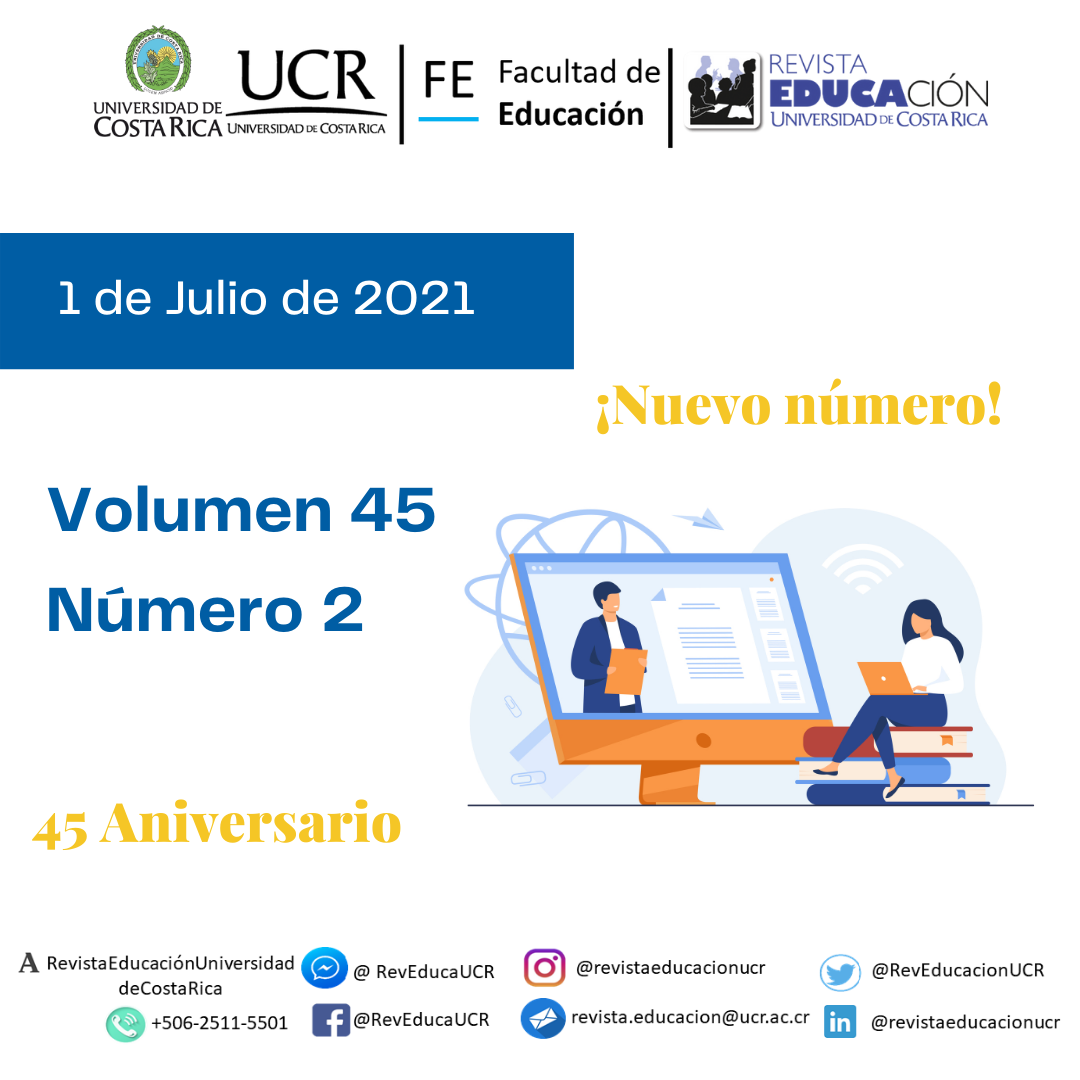Abstract
Involving students in scientific research is essential for achieving short- and long-term tasks and objectives. A series of four research projects were executed from 2016-2019, whereby extracts obtained from the Crescentia cujete, Lippia alba, Aloe vera, Bixa orellana, Psidium guajava and Jatropha gossypilfolia plants were assessed to investigate their antibacterial and antifungal properties, hypoglycemic effect on diabetic mice as well its toxicity on Artemia sp. The studies proved to be rewarding given the outstanding performance of the student interns, optimizing their motivation and leading to improved cooperation and relationships with colleagues and the laboratory staff. In addition to meeting their goals, other benefits were observed that contributed to optimism, sociability and fellowship among students. Through the experiments conducted with phytochemicals, students learned about commitment, gained scientific insight and developed significant scientific and educational relationships.
References
Cómo citar
Lanza Castillo, V.V., Henríquez Guzmán, W.C., Romero Maza, L.A. y Bennasar García, M.I. (2021). Inserción de estudiantes de educación secundaria (ciclo diversificado) en investigaciones de bioactividad de productos naturales. Revista Educación, 45(2). Recuperado de http://doi.org/10.15517/revedu.v45i1.43869
Referencias bibliográficas
Arguedas, I. (2010). Involucramiento de las estudiantes y los estudiantes en el proceso educativo. Revista Iberoamericana sobre Calidad, Eficacia y Cambio en Educación, 8, 63-78.
Arias, F. (2012). El proyecto de investigación. Introducción a la metodología científica. 6a Edición. Caracas, Venezuela: Editorial Episteme.
Bauer, A.; Kirby, W.; Sherris, I. y Turck, M. (1966). Antibiotic susceptibility testing by standarized single disk method. American journal of clinical pathology, 45(4), 493-496.
Beccaria, L. y Paz, J. (2016). La inserción precaria de mujeres y los jóvenes en el mercado laboral en América Latina y sus consecuencias para instituciones laborales. Chile: Comisión Económica para América Latina y el Caribe [CEPAL].
Cedeño, Y. (2019). Evaluación del efecto hipoglucemiante de las plantas Ziziphus mauritiana Lam (ponsigué) y Phyllantus niruri L. (huevito escondido), en ratones albinos Mus musculus con hiper-glucemia inducida experimentalmente. (Trabajo de grado). Universidad de Oriente, Departamento de Bioanálisis.
Ciencia y Tecnología para el Desarrollo (CYTED). (1995). Programa Iberoamericano de Ciencia y Tecnología para el Desarrollo. En R. Pinzón, Manual de Técnicas de Investigación. Bogotá, Colombia: Editorial R. Pinzón.
De León, T. y Rodríguez, R. (2008). El efecto de la orientación vocacional en la elección de carrera. Revista Mexicana de Orientación Educativa, 5(13), 10-16.
Farjana, N., Zahangir, A., Habibur, R. y Ekramul, H. (2003). In vitro antimicrobial activity of the compound isolated from Chloroform extract of Moringa oleifera Lam. Pakistan Journal of Biological Sciences, 6(22), 1888-1890.
Fredricks, J., Blumenfeld P. y Paris, A. (2004). School engagement: potential of the concept, state of the evidence. Review of Educational Research, 74(1), 59-109.
Garay, N. y Torres, J. (2019). Identificar las Prácticas Pedagógicas desde la Formación por Competencias en el área de Ciencias Naturales. Revista Venezolana de Sociología y Antropología, 29, 464-505.
González, M. (2006). Absentismo y Abandono Escolar: Una situación singular de la exclusión educativa. Revista Iberoamericana sobre Calidad, Eficacia y Cambio en Educación, 4(1), 1-15.
Goodenow, C. (1993). The psychological sense of school membership among adolescents: scale development and educational correlates. Psychology in the Schools, 30(1), 79-90.
Guimarâes, R., Succi, G., Montalli, V., Niederauer, A. y Succi, R. (2018). Resultados negativos en la investigación científica: aspectos éticos. Revista Bioética, 26(2), 245-250. doi: https://doi.org/10.1590/1983-80422018262245
INAGRO. (2013). La red de educación técnica de Fe y Alegría: una oferta diversificada y articulada a las demandas de la población y del mercado (Informe Evaluación Final Proyecto). La Paz, Bolivia: Entreculturas/Fe y Alegría/Intermón-Oxfam.
Inocente, M., Guija, E., Zarzosa, E., Loja, B. y Ponce, J. (2015). Efecto hipoglicemiante de los extractos acuoso y etanólico de Psidium guajava L. (Guayaba) en ratas diabéticas inducidas por aloxano. Horizonte Médico, 15, 41-48.
Madubunyi, I. (1995). Antimicrobial activities of the constituents of Garcinia kola seeds. International Journal of Pharmacognosy, 33(33), 232-237.
Mahbub, K., Hoq, M., Ahmed, M. y Sarker, A. (2011). In vitro antibacterial activity of Crescentia cujete and Moringa oleifera. Bangladesh Research Publications Journal, 5(4), 337-343.
Meléndez M., Sileny; Gómez V. y Luis J. (2008). La planificación curricular en el aula. Un modelo de enseñanza por competencias. Laurus, 14(26), 367-392.
Meyer, B., Ferrigni, N., Putnam, J., Jacobsen, L., Nichols, D. y J. McLaighlin. (1982). Brine Shrimp: A convenient general bioassay for active plant constituents. Journal of Medicine Plant Research, 45, 31-34.
Monks, N., Lerner, C., Henriquez, A., Farias, F., Schapoval, E., Suyenaga, E., Da Rocha, A., Schwartsmann, G. y Mothes, B. (2002). Anticancer, antichemotactic and antimicrobial activities of marine sponges collected off the coast of Santa Catarina, Southern Brazil. Journal of Experimental Marine Biology and Ecology, 281(1-2): 1-12. doi: https://doi.org/10.1016/S0022-0981(02)00380-5
Ryan, A. y Patrick, H. (2001). The classroom social environment and changes in adolescents’ motivation and engagement during middle school. American Educational Research Journal, 38(2), 437-460.
Sánchez, M. (2005). El aprendizaje en contextos laborales reales: el caso de las pasantías de los estudiantes universitarios. Educere, 9(30), 345-357.
Sevilla, M. P. (2017), Panorama de la educación técnica profesional en América Latina y el Caribe. Serie Políticas Sociales, No. 222 (LC/L.4287), Santiago de Chile: Comisión Económica para América Latina y el Caribe (CEPAL).
Stephan, C. (1977). Methods for calculating in LC50. En F.L. Mayer y J. Hamelink (Ed). American Society for Testing and Material (ASTM) Acuatic Toxicology and Hazard Evaluation (pp. 65-84), Pennsylvania: American Society for Testing and Materials.
Universidad Pedagógica Experimental Libertador (UPEL). (2016). Manual de Trabajos de Grado de Especialización y Maestría y Tesis Doctorales. Vicerrectorado de Investigación y Postgrado. 5a edición. Venezuela: FEDUPEL.
Van Ryzin, M., Gravely, A. y Roseth, C. (2009). Autonomy, belongingness, and engagement in school as contributors to adolescent psychological well-being. Journal of youth and adolescence, 38(1), 1-12. doi: https://doi.org/10.1007/s10964-007-9257-4
Zuluaga, O. (1999). Pedagogía e historia: La historicidad de la pedagogía. La enseñanza un objeto del saber. Bogotá: Editorial Universidad de Antioquia.



